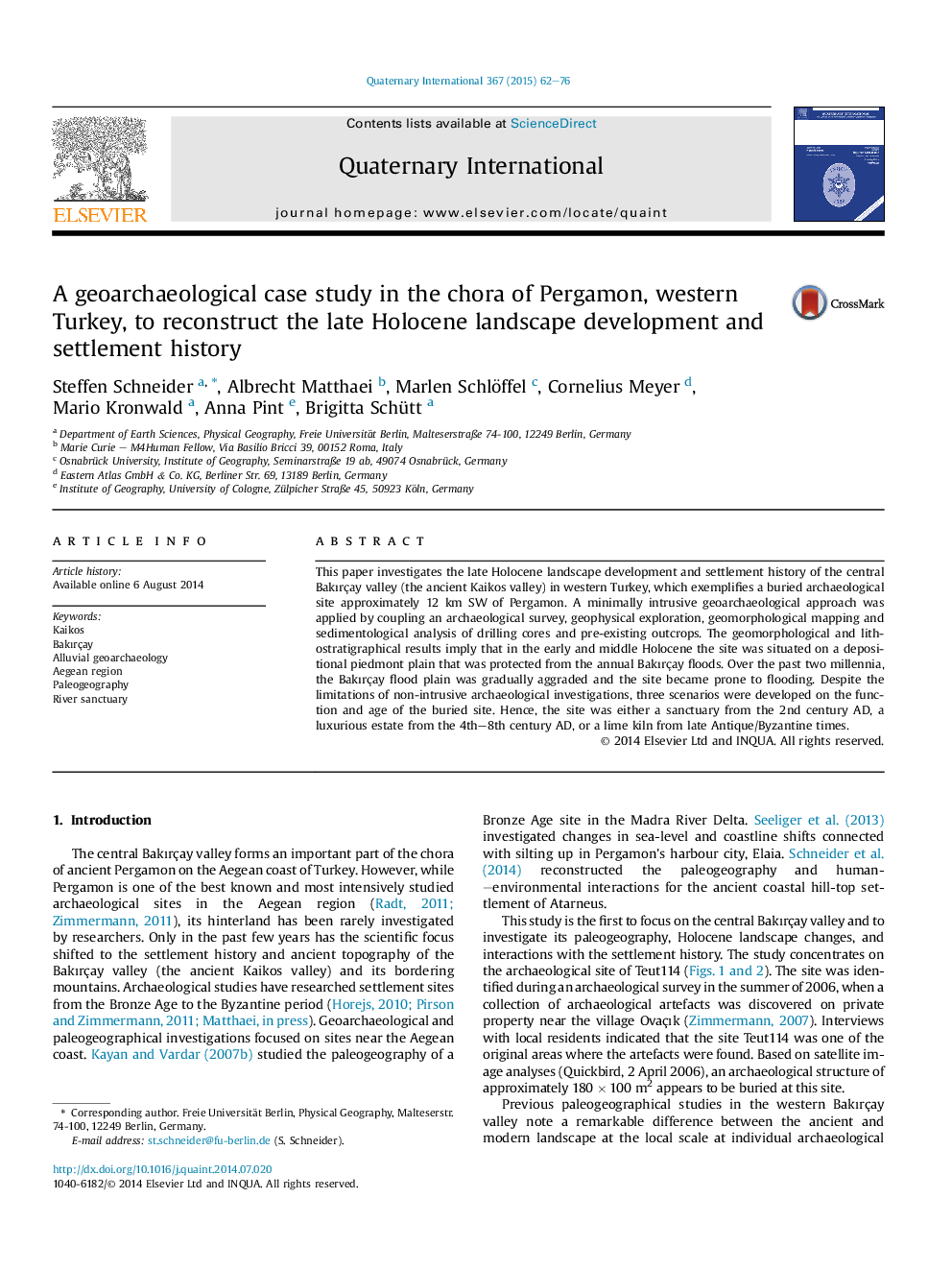| Article ID | Journal | Published Year | Pages | File Type |
|---|---|---|---|---|
| 1040857 | Quaternary International | 2015 | 15 Pages |
This paper investigates the late Holocene landscape development and settlement history of the central Bakırçay valley (the ancient Kaikos valley) in western Turkey, which exemplifies a buried archaeological site approximately 12 km SW of Pergamon. A minimally intrusive geoarchaeological approach was applied by coupling an archaeological survey, geophysical exploration, geomorphological mapping and sedimentological analysis of drilling cores and pre-existing outcrops. The geomorphological and lithostratigraphical results imply that in the early and middle Holocene the site was situated on a depositional piedmont plain that was protected from the annual Bakırçay floods. Over the past two millennia, the Bakırçay flood plain was gradually aggraded and the site became prone to flooding. Despite the limitations of non-intrusive archaeological investigations, three scenarios were developed on the function and age of the buried site. Hence, the site was either a sanctuary from the 2nd century AD, a luxurious estate from the 4th–8th century AD, or a lime kiln from late Antique/Byzantine times.
